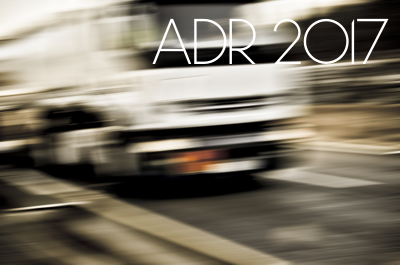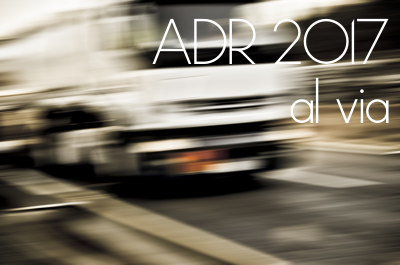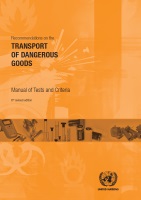Safety ADR / Dangerous Goods App
Safety ADR© è un’app per il trasporto di merci pericolose ADR che consente di:
– visualizzare tutta la Tabella A cap. 3.2 ADR per ONU/denominazione/classe/altro* (Italiano, Inglese);
– compilare per ciascuna materia ADR il “Report materia” con il parametro “Safety” (1) (Italiano, Inglese);
– compilare per ciascuna materia ADR la “Tremcards P.0” (2) (Italiano, Inglese);
– consultare le Istruzioni Scritte secondo l’ADR (Inglese, Italiano, Francese, Russo, Danese, Lettone, Norvegese, Svedese, Tedesco, Ungherese, Romeno, Portoghese, Ceco, Spagnolo, Turco, Sloveno, Slovacco, Estone, Neerlandese (Belgio), Neerlandese (Paesi Bassi), Polacco, Finlandese, Lituano, Bulgaro, Greco, Serbo);
– avere news in tempo reale visualizzate direttamente in Home;
– consultare l’accordo ADR (Inglese, Francese);
– consultare le etichette ADR, le classi, i Kemler (Italiano, Inglese).
Accordi Multilaterali ADR M299 e M302: sottoscritti dall’italia
Il 19 Agosto l’italia ha sottoscritto gli Accordi Multilaterali (Multilateral Agreement) M299 e M302
Gli Accordi sono inerenti:
Accordo multilaterale M299
Deroghe gas Classe 2 importati in conformità con 1.1.4.2 (Trasporti comportanti un percorso marittimo o aereo) in recipienti a pressione ricaricabili approvate dagli Stati Uniti.
Accordo multilaterale M302
ONU 2010 (IDRURO DI MAGNESIO): Idruro di magnesio trasportato in sistemi trasportabili di stoccaggio idrogenati
_____________
ADR 1.5.1 Deroghe temporanee
1.5.1.1
In conformità all’Articolo 4, paragrafo 3 dell’ADR, le autorità competenti delle Parti contraenti possono convenire direttamente tra loro di autorizzare alcuni trasporti sul loro territorio in deroga temporanea alle disposizioni dell’ADR, a condizione tuttavia che la sicurezza non sia compromessa.
Queste deroghe temporanee devono essere comunicate dall’autorità che ha preso l’iniziativa al Segretariato della Commissione Economica per l’Europa delle Nazioni Unite, che le porterà a conoscenza delle Parti contraenti
ADR 2017: LAUNCH UNECE
ADR 2017: APPROVAL PROCEDURE WITH COMMUNICATION UNECE
As procedure (Art. 14 paragraph 1 ADR), UN Secretary-General announced on 1 July 2016 with known CN443.2016.TREATIES-XI.B.14 he has received from Portugal (Chairman of WP.15 ), the text of the amendments to ADR which should enter into force on 1 January 2017.
If within three months (by 1 October 2016) there will be no objection from the Contracting States that the text will be finally approved.
ADR 2017: al via con la Comunicazione UNECE
ADR 2017: AL VIA LA PROCEDURA DI APPROVAZIONE CON LA COMUNICAZIONE UNECE
Come da procedura (Art. 14 paragrafo 1 ADR), il Segretario Generale dell’ONU ha comunicato in data 1° Luglio 2016 con nota C.N.443.2016.TREATIES-XI.B.14, di aver ricevuto dal Portogallo (Chairman del WP.15), il testo degli emendamenti all’ADR che dovranno entrare in vigore il 1° gennaio 2017.
Se entro tre mesi (entro il 1° ottobre 2016) non vi saranno obiezioni da parte degli Stati contraenti tale testo risulterà definitivamente approvato.
ADR 2017 : Draft of amendments and the first comments
ADR 2017 : Draft of amendments and the first comments
1 January 2017 is expected to change the “European Agreement concerning the International Carriage of Dangerous Goods by Road (ADR 2017) , available by the UNECE on the draft amendments and the first comments on news .
ADR 2017: Draft delle modifiche e primi commenti
ADR 2017: Draft delle modifiche ed i primi commenti IT
Il 1° gennaio 2017 è prevista la modifica dell’Accordo europeo relativa al trasporto internazionale su strada delle merci pericolose (ADR 2017), disponibili dall’UNECE il draft delle modifiche ed i primi commenti sulle novità in IT.
Multilateral Agreement M286
Multilateral Agreement M286
Under section 1.5.1 of ADR concerning restrictions on the passage through road tunnels
(1) By derogation from the provisions of paragraph 1.9.5.3.6 of ADR, the tunnel restrictions shall neither apply to dangerous goods assigned to the first entry of UN number 2814 or 2900 in Table A of Chapter 3.2 nor to those assigned to UN number 3077 or 3082.
(2) In addition to the information prescribed, the consignor shall enter in the transport document: “Carriage agreed under the terms of section 1.5.1 of ADR (M286)”
(3) This Agreement shall be valid until 31 December 2016 for carriage on the territories of those ADR Contracting Parties signatory to this Agreement. lf it is revoked before that date by one of the signatories, it shall remain valid until the above mentioned date only for carriage on the territories of those ADR Contracting Parties signatory to this Agreement which have not revoked it.
Bonn, 30 October 2015
The competent authority for ADR
Accordo multilaterale M286
Accordo multilaterale M286
ai sensi della sezione 1.5.1 dell’ADR concernente le limitazioni della circolazione nelle gallerie.
1. In deroga alle disposizioni della sezione 1.9.5.3.6 ADR, le limitazioni alla circolazione nelle gallerie non si applicano alle merci pericolose attribuite alla prima rubrica della tabella A del capitolo 3.2 dei numeri ONU 2814 e 2900, né a quelle dei numeri ONU 3077 e 3082.
ONU 2814
ONU 2900
ONU 3077
ONU 3082
2. Oltre alle indicazioni prescritte, il mittente deve apporre sul documento la dicitura seguente «Trasporto secondo la sezione 1.5.1 dell’ADR (M286)»
3. Il presente accordo, limitato al 31 dicembre 2016, si applica ai trasporti effettuati nei territori delle Parti contraenti l‘ADR che lo hanno sottoscritto.
In caso di recesso anticipato da parte di uno dei contraenti, l‘accordo resta valido fino alla suddetta data solo per i trasporti effettuati nei territori delle Parti contraenti l’ADR che lo hanno sottoscritto, ma non disdetto.
Italy 18/01/2016
Date of Expiry: 1 January 2017
Recommendations on the Transport of Dangerous Goods – Manual of Tests and Criteria (Rev.6) – 2015
Recommendations on the Transport of Dangerous Goods – Manual of Tests and Criteria
Rev. 6 December 2015
The Manual of Tests and Criteria contains criteria, test methods and procedures to be used for classification of dangerous goods according to the provisions of Parts 2 and 3 of the Model Regulations, as well as of chemicals presenting physical hazards according to the Globally Harmonized System of Classification and Labelling of Chemicals. As a consequence, it supplements also national and international regulations.
This publication contains classification procedures, test methods and criteria relating to substances and articles such as explosives, self-reacting substances, organic peroxides, flammable aerosols, flammable liquids, oxidizing substances, corrosive substances, and miscellaneous other dangerous goods such as fertilizers and lithium cells and batteries.
This sixth revised edition includes all the amendments to the fifth revised edition adopted by the Committee at its fifth and sixth sessions in 2010 and 2012 (published under the symbols ST/SG/AC.10/11/Rev.5/Amend.1 and ST/SG/AC.10/11/Rev.5/Amend.2) and those adopted at its seventh session in 2014 (ST/SG/AC.10/42/Add.2).
The new amendments adopted in 2014 address in particular:
A new test to measure the sensitiveness of the substance to drop-mass impact and to determine if the substance is too dangerous to transport in the form tested (Section 13, Test 3 (a) (vii): Modified Bureau of Mines impact machine test);
Updated procedures for the classification of lithium metal and lithium ion cells and batteries (sub-section 38.3);
A new test procedure for the classification of substances of Class 9 which may evolve flammable vapours (sub-section 38.4);
A new Part V containing schemes for the classification of desensitized explosives for supply and use (including storage) according to the GHS;
A new test for the classification of cartridges, small arms (UN No. 0012) (Appendix 9); and Updating of miscellaneous existing provisions.
Previous editions, CD-ROM and language versions are also available: bibliographic information on all editions and language versions.
For more information on this publication, visit the UN Manual of Tests and Criteria section of the UNECE Transport Division Website.
Published: December 2015
ST/SG/AC.10/11/Rev.6
Sales No. E.15.VIII.3
ISBN 978-92-1-139155-8
Price: US$ 125
Languages: E, F, S, A, C, R
Recommendations on the transport of dangerous goods, model regulations (Rev.19) – 2015
These recommendations have been developed in the light of technical progress, the advent of new substances and materials, the exigencies of modern transport systems and, above all, the requirement to ensure the safety of people, property and the environment. They are addressed to governments and international organisations concerned with the regulation of the transport of dangerous goods.
The Model Regulations cover the classification of dangerous goods, their listing, the use, construction, testing and approval of packagings and portable tanks, as well as consignment procedures such as marking, labelling, placarding and documentation.
This nineteenth revised edition contains various new and revised provisions concerning, inter alia, the transport of viscous liquids; gases; polymerizing substances; internal combustion engines or machinery powered by flammable liquids or gases; electric vehicles; lithium batteries and ammonia dispensing systems..
ST/SG/AC.10/1/Rev.19
Complete set of two volumes
Sales No. 15.VIII.1
ISBN 978-92-1-139154-1
Price: US$ 160
Languages: E, F (A, C, R, S forthcoming)
How to order this publication?
Previous editions and CD-ROM of this publication are also available: bibliographic information on all editions and language versions
For more information on these recommendations, visit the UN Model Regulations section of the UNECE Transport Division Website.
GHS REV. 6.0 Presentation UNECE
GHS PRESENTATIONS
GHS Rev.6: powerpoint presentations now available online in English, French and Spanish
Globally Harmonized System of Classification and Labelling of Chemicals (GHS)
The following presentations are based on the sixth revised edition of the GHS (GHS Rev.6).
Introduction
01. Historical background
02. Purpose, scope and application of the GHS
Physical, health and environmental hazards: Classification criteria for substances and mixtures
03. Physical hazards: classification criteria for substances and mixtures
04. Health and environmental hazards: classification criteria for substances and mixtures
Hazard communication
05. Hazard communication: Labelling and Safety Data Sheets
Note: The information contained in the presentations hereafter is not exhaustive and is provided only as guidance for the application of GHS classification criteria. For classification purposes, please refer to the official text of the GHS.
GHS Rev. 6.0 Presentazione UNECE
GHS PRESENTATIONS
GHS Rev.6: powerpoint presentations now available online in English, French and Spanish
Globally Harmonized System of Classification and Labelling of Chemicals (GHS)
The following presentations are based on the sixth revised edition of the GHS (GHS Rev.6).
Introduction
01. Historical background
02. Purpose, scope and application of the GHS
Physical, health and environmental hazards: Classification criteria for substances and mixtures
03. Physical hazards: classification criteria for substances and mixtures
04. Health and environmental hazards: classification criteria for substances and mixtures
Hazard communication
05. Hazard communication: Labelling and Safety Data Sheets
Note: The information contained in the presentations hereafter is not exhaustive and is provided only as guidance for the application of GHS classification criteria. For classification purposes, please refer to the official text of the GHS.
GHS. Rev.6 (2015)
The GHS addresses classification of chemicals by types of hazard and proposes harmonized hazard communication elements, including labels and safety data sheets.
It aims at ensuring that information on physical hazards and toxicity from chemicals be available in order to enhance the protection of human health and the environment during the handling, transport and use of these chemicals.
The GHS also provides a basis for harmonization of rules and regulations on chemicals at national, regional and worldwide level.
The sixth revised edition of the GHS contains various new or revised provisions including, inter alia, a new hazard class for desensitized explosives and a new hazard category for pyrophoric gases; miscellaneous provisions intended to clarify the criteria for some hazard classes (explosives, specific target organ toxicity following single exposure, aspiration hazard and hazardous to the aquatic environment); additional information to be included in the Safety Data Sheets (section 9); revised and further rationalized precautionary statements and a new example in Annex 7 addressing labelling of small packagings.
ST/SG/AC.10/30/Rev.6
Sales No. E.15.II.E.5
ISBN: 978-92-1-117087-0
eISBN: 978-92-1-057320-7
Languages: EN






